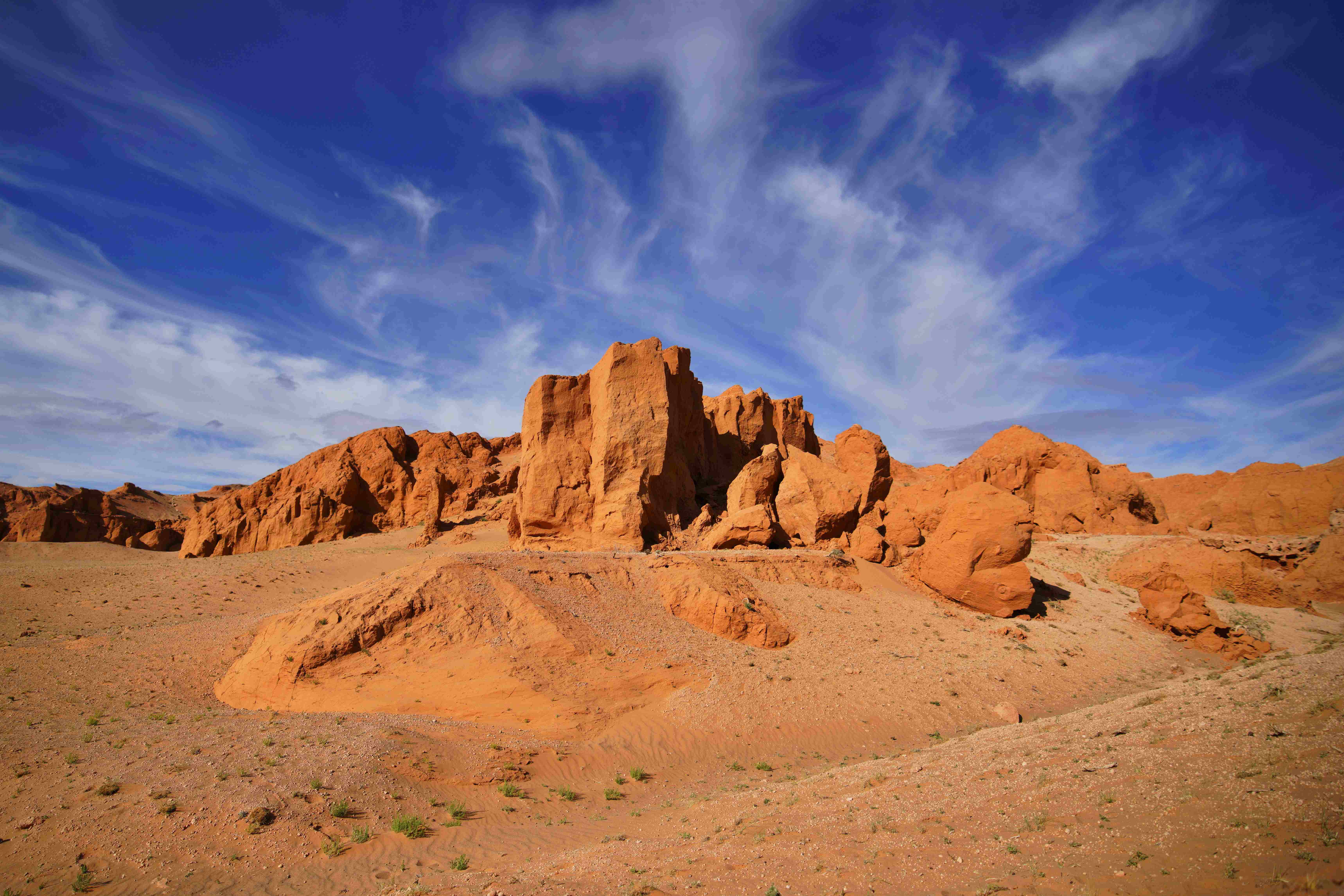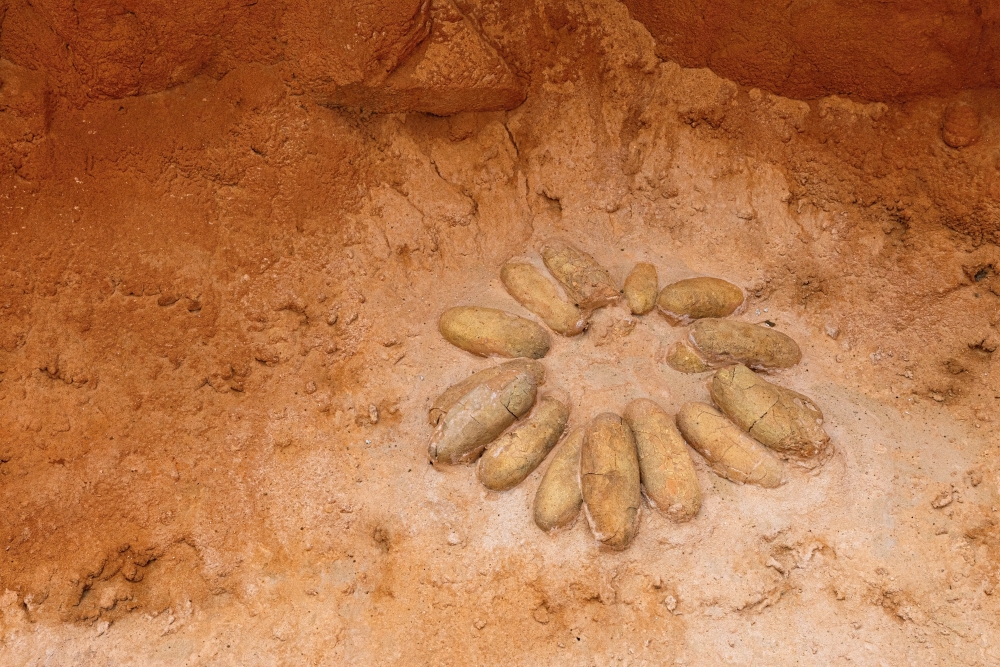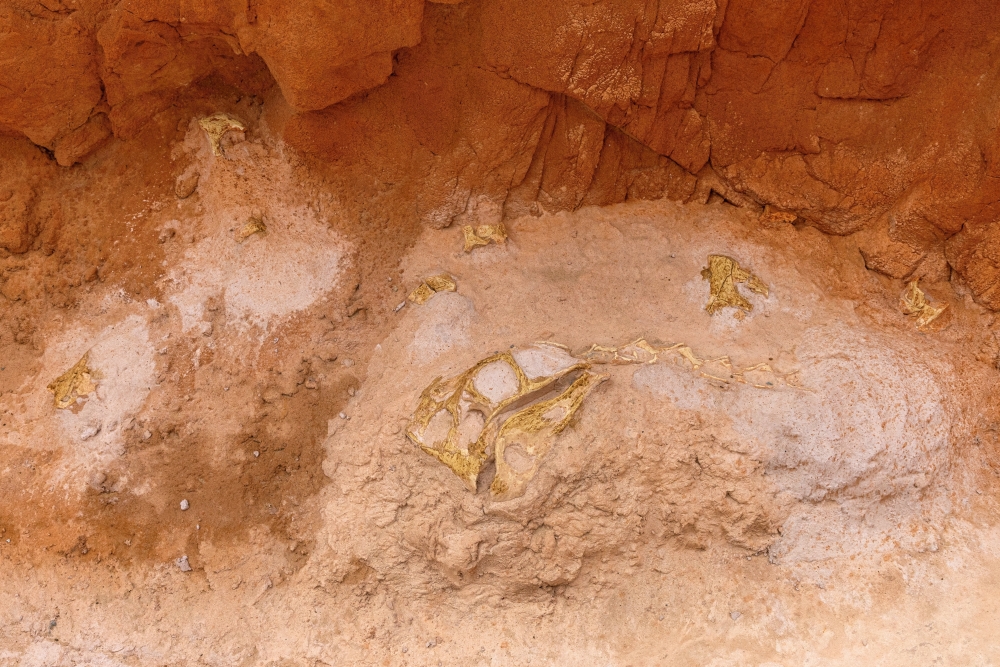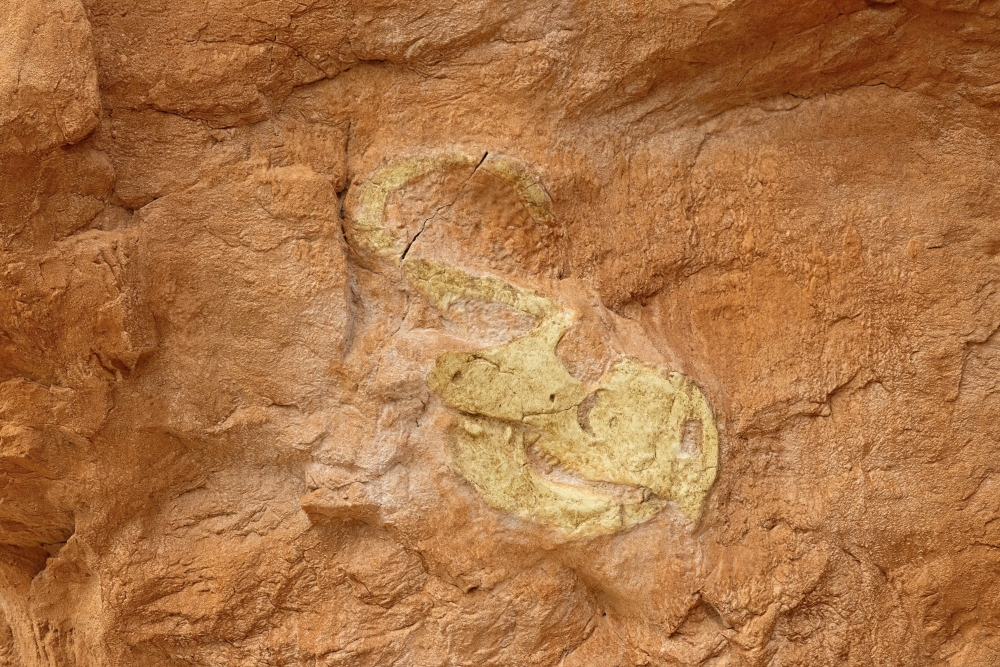The Flaming Cliffs: A Window into Prehistoric Life
23. 03. 2024
The Gobi exhibit at Prague Zoo includes a presentation of a globally significant palaeontological site: the striking red rock formations near which fossilised dinosaur eggs were first discovered. The 1923 American expedition that made the find named the area the “Flaming Cliffs”.

Flaming cliffs in the Gobi. Photo: David Broda
The vast plains of southern Mongolia were not always the inhospitable, rocky desert with scorching summers and freezing winters that we see today. Around 10,000 years ago, the region was more humid, offering better conditions for life. People settled here, taking advantage of what the environment had to offer. Although agriculture never took hold, the hunter-gatherers of the time made the most of the available resources—from hunting wild ungulates to collecting the eggs of ostriches, which still lived in the area. These enormous eggs were a valuable source of protein, but people also came across much older eggs—those of dinosaurs.

The Flaming Cliffs got their name from the fiery colors they glow with at sunset. Photo: David Broda, Prague Zoo
Egg Thief?
Over thousands of years, erosion has gradually exposed fossilised dinosaur eggshells—and even complete skeletons—from the reddish sandstone of the Flaming Cliffs. Their discoveries are of global importance. The first scientifically described dinosaur eggs came from this very area. The fossils include eggshell fragments, individual eggs, and entire nests belonging to theropod dinosaurs of the family Oviraptoridae, possibly even of the genus Oviraptor itself.
These small, feathered, bipedal predators—less than a metre tall—had powerful beaks and a distinctive bony crest. They were once mistakenly believed to be “egg thieves”, based on fossils found in close proximity to nests. However, more recent research shows that the nests in question likely belonged to the oviraptors themselves, and they may in fact have been guarding their eggs, perhaps from harsh weather conditions.

Reconstruction of a fossilized oviraptor nest, casts of eggs based on originals from the collections of the National Museum.
Photo: Tereza Mrhálková, Prague Zoo

The cast of the skull and part of the spine of an oviraptor was made based on an older cast of Polish material from Mongolia.
Photo: Tereza Mrhálková, Prague Zoo
Dinosaurs of the Flaming Cliffs
The sedimentary rocks of the Flaming Cliffs belong to the Djadokhta Formation, dating from 75–71 million years ago (Upper Cretaceous). This formation is among the richest in the world in terms of dinosaur diversity.
The most common dinosaur species whose bones and eggs have been found in the Gobi is Protoceratops. This smaller, hornless ancestor of the more famous Triceratops was over two metres long, weighed around 100–150 kg, and walked on all fours. Herds of these herbivores roamed the ancient landscape, grazing on tough, fibrous vegetation. While moving in large groups offered some protection from predators, it wasn’t always enough. A unique fossil find attests to this: the skeletons of a Protoceratops and a Velociraptor—the latter a well-known dromaeosaurid and likely the most common predator in the region—were found locked in combat. Both dinosaurs died during the struggle and were quickly buried by fine sand or mud.

A cast of a Protoceratops skull placed near the new Gobi exhibit. Photo: Tereza Mrhálková, Prague Zoo
Eggs as Talismans
Thanks to wind and water erosion, not only skeletons but also dinosaur eggs have been preserved. People began collecting them thousands of years before the Egyptian pyramids were built. Archaeological finds of worked and pierced fragments of dinosaur eggshells suggest they were used as ornaments or talismans. These artefacts represent one of the oldest direct interactions between prehistoric humans and the fossilised remains of creatures that lived tens of millions of years earlier.
Original Casts of Casts
The palaeontological reconstructions on display in the Gobi exhibit are casts created in cooperation with the Palaeontological Department of the National Museum in Prague. The Oviraptor egg is part of the museum’s collections, while the skulls are casts of casts—originally produced in Poland, a country that led palaeontological expeditions to Mongolia in the first half of the 20th century. Each object thus has a real scientific origin and offers a faithful representation of life forms more than 70 million years old.
Ondřej Kohout
ČESKY: Planoucí útesy pouště Gobi v Zoo Praha








